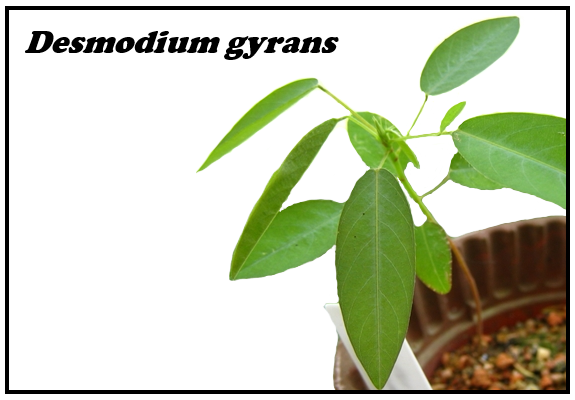
Indian Telegraph plant (Desmodium gyrans) belongs to
A. Malvaceae
B. Leguminosae
C. Solanaceae
D. Liliaceae
Answer
499.8k+ views
Hint: It is a large and most important family of the flowering plants which is commonly known as the bean family having fused sepals as the characteristic feature.
Complete answer:
Desmodium gyrans, commonly known as the Indian Telegraph plant. It belongs to the family Leguminosae, also known as family Fabaceae. It is commonly called pea or legume family.
Additional Information:
-The word Faba was derived from the Latin language which means the bean.
-The family Leguminosae is an older name for the family Fabaceae.
-The process of biological nitrogen fixation occurs in the family Leguminosae as the legumes are present in this family.
-It is most commonly found in the tropical rain forests and the dry forests of Africa and America.
-Desmodium is botanically known as Codariocalyx motorius.
-It is the group of few plants which show rapid movement including Mimosa pudica, and the Venus flytrap.
-The plant is small and has purple flowers.
-The leaves move at rapid speeds to maximize the light at the trophic level.
-Each leaf absorbs more energy because the weight of the leaves is more and the plant needs to spend more energy on its movement.
-These movements may form a butterfly mimicry which stops the eggs of the butterflies in the leaves.
-The leaves rotate about 3-6 minutes.
-The plant is described in detail in Charles Darwin The Power of Movement in plants'

So, the correct answer is ‘Leguminosae’.
Note: The plant Desmodium gyrans is described in detail in 1880 by Charles Darwin, in his book ‘The Power of Movements in Plants’. It has been used as an ornament in a garden. They are erect plants but totally on their axes and move up and down under the influence of the sunshine.
Complete answer:
Desmodium gyrans, commonly known as the Indian Telegraph plant. It belongs to the family Leguminosae, also known as family Fabaceae. It is commonly called pea or legume family.
Additional Information:
-The word Faba was derived from the Latin language which means the bean.
-The family Leguminosae is an older name for the family Fabaceae.
-The process of biological nitrogen fixation occurs in the family Leguminosae as the legumes are present in this family.
-It is most commonly found in the tropical rain forests and the dry forests of Africa and America.
-Desmodium is botanically known as Codariocalyx motorius.
-It is the group of few plants which show rapid movement including Mimosa pudica, and the Venus flytrap.
-The plant is small and has purple flowers.
-The leaves move at rapid speeds to maximize the light at the trophic level.
-Each leaf absorbs more energy because the weight of the leaves is more and the plant needs to spend more energy on its movement.
-These movements may form a butterfly mimicry which stops the eggs of the butterflies in the leaves.
-The leaves rotate about 3-6 minutes.
-The plant is described in detail in Charles Darwin The Power of Movement in plants'

So, the correct answer is ‘Leguminosae’.
Note: The plant Desmodium gyrans is described in detail in 1880 by Charles Darwin, in his book ‘The Power of Movements in Plants’. It has been used as an ornament in a garden. They are erect plants but totally on their axes and move up and down under the influence of the sunshine.
Recently Updated Pages
Master Class 11 Economics: Engaging Questions & Answers for Success

Master Class 11 Business Studies: Engaging Questions & Answers for Success

Master Class 11 Accountancy: Engaging Questions & Answers for Success

Master Class 11 English: Engaging Questions & Answers for Success

Master Class 11 Computer Science: Engaging Questions & Answers for Success

Master Class 11 Maths: Engaging Questions & Answers for Success

Trending doubts
State and prove Bernoullis theorem class 11 physics CBSE

What are Quantum numbers Explain the quantum number class 11 chemistry CBSE

Write the differences between monocot plants and dicot class 11 biology CBSE

Why is steel more elastic than rubber class 11 physics CBSE

Explain why a There is no atmosphere on the moon b class 11 physics CBSE

1 ton equals to A 100 kg B 1000 kg C 10 kg D 10000 class 11 physics CBSE




